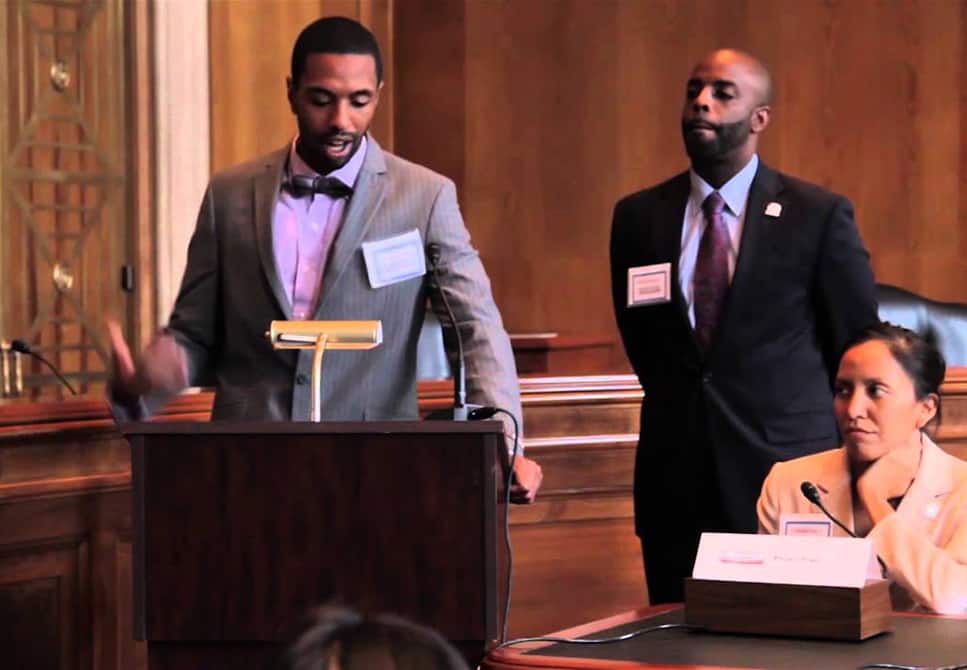How Storytelling Works in the Brain and Why We Need Stories

In the summer of 2004, two people went for a drive in California’s Silicon Valley that would change the way we looked at electric cars. Sitting in a tiny yellow 2-seater was a hardware guy named Martin Eberhard and a product designer named Malcolm Smith. As Drake Baer describes, the car “felt handmade — because it was.” On the side of the car was a decal that read tzero. Eberhard was driving, and Smith was in the passenger seat.
“Try and touch the dashboard,” Eberhard instructed.
Smith leaned forward, lifted his arm and Eberhard kicked the accelerator. Smith’s hand never made it to the dash.
Built by AC Propulsion, the tzero was all-electric. It lept from zero to 60 in under 4 seconds and Smith was thrown backwards in the seat. Soon after, Tesla took off.
Chances are if I shared this story in a list, or just stated the facts, you would most likely forget it. Or at least not remember it in such detail. Placing your audience in the moment, in the passenger seat, next to Eberhard, is extraordinarily more memorable. Story2 describes this strategy as the moments method. But why is this form more memorable?
How the Brain Processes Stories
When content is not delivered as narrative, it tends to trigger majorly Broca‘s area and Wernicke‘s area. That’s to say, it mostly hits our language processing parts in the brain, where we decode words into meaning.
Emeritus professor of cognitive psychology at the University of Toronto, Keith Oatley, makes the case that storytelling goes beyond the basic language areas, citing that longform storytelling produces a lucid simulation of reality, one that “runs on minds of readers just as computer simulations run on computers.” Stories — with intentional character development, plot formation, inflection points, and communicated core beliefs progress far beyond Broca‘s area and Wernicke‘s area in the brain.
Annie Murphy Paul, creator of Intelligence Report (a must subscribe blast from our annual Smart Lists) recognizes that stories reach the:
Capacity of the brain to construct a map of other people’s intentions — ‘theory of mind.’ Narratives offer a unique opportunity to engage this capacity, as we identify with characters’ longings and frustrations, guess at their hidden motives and track their encounters with friends and enemies, neighbors and lovers.
She goes on to share that a 2010 study found that in preschool-age children — “the more stories they had read to them, the keener their theory of mind.”
The unconscious mind being the primitive and instinctual can be built from stories that hone the theory of mind.
To reach this we need storytelling that answers what’s at stake for characters and choice points when an action or decision occurs that reflects a value or moral.
As Generation Do-it-Yourself continues to carve out their own unique pathways to careers, we need to have access to a value set within the unconscious mind that’s built on the capacity of our theory of mind. This will help us in navigating uncertainty in the face of the increasing choice. And more so than ever, it’s the role of educators and Smart Parents to lead this storytelling effort.
According to Bargh and Morsella in The Unconscious Mind, “Values are ‘downloaded’ during early childhood development, thereby greatly reducing the unpredictability of the child’s world and his or her uncertainty as to how to act and behave in it.” They go on to share that actions are, “Unconsciously activated and that the role of consciousness works as gatekeeper and sense maker after the fact. In this model, conscious processes kick in after a behavioral impulse has occurred in the brain—that is, the impulse is first generated unconsciously.”
Additionally, Nick Morgan in a blog on hbr.org shares that “research from Carnegie Mellon University indicates that our unconscious minds actually make better decisions when left alone to deal with complex issues,” and that “the brain unconsciously processes decision information in ways that lead to improved decision-making.”
So now with this understanding, how are educators and parents suppose to use stories to support improved decision-making?
Students, now more so than ever, need to be telling their stories. Students need to put in the driver seat when it comes to storytelling.
Parents and educators need to be creating opportunities for students to explore how they understand their themselves in larger contexts, that make them think critically about their place in the world, and the positive changes that they see themselves making in it.
If we wish to prepare students to mobilize and take action on our most pressing issues, we need to be training students to have a clear vision of who they are, and the ideas, beliefs and values that drive them.
Storytelling is an exercise in value exploration. When students tell their own stories, they reflect on the values that are important to them and what they have done or plan to do live through their core-values.
As students pave their own unique learning path and life journeys they need to have a clear understanding of how and why they wish to live their lives.
For a lesson to use in your classroom, check out 10 Simple Lesson Plans for Scaffolding Student-Led Projects.
For more on storytelling, check out:
- Why Should We Teach Storytelling? 5 Reasons to Start Today
- 8 Storytelling Hacks to Navigate College and Career
- The State of Storytelling at SXSWedu
Stay in-the-know with all things EdTech and innovations in learning by signing up to receive the weekly Smart Update.






0 Comments
Leave a Comment
Your email address will not be published. All fields are required.